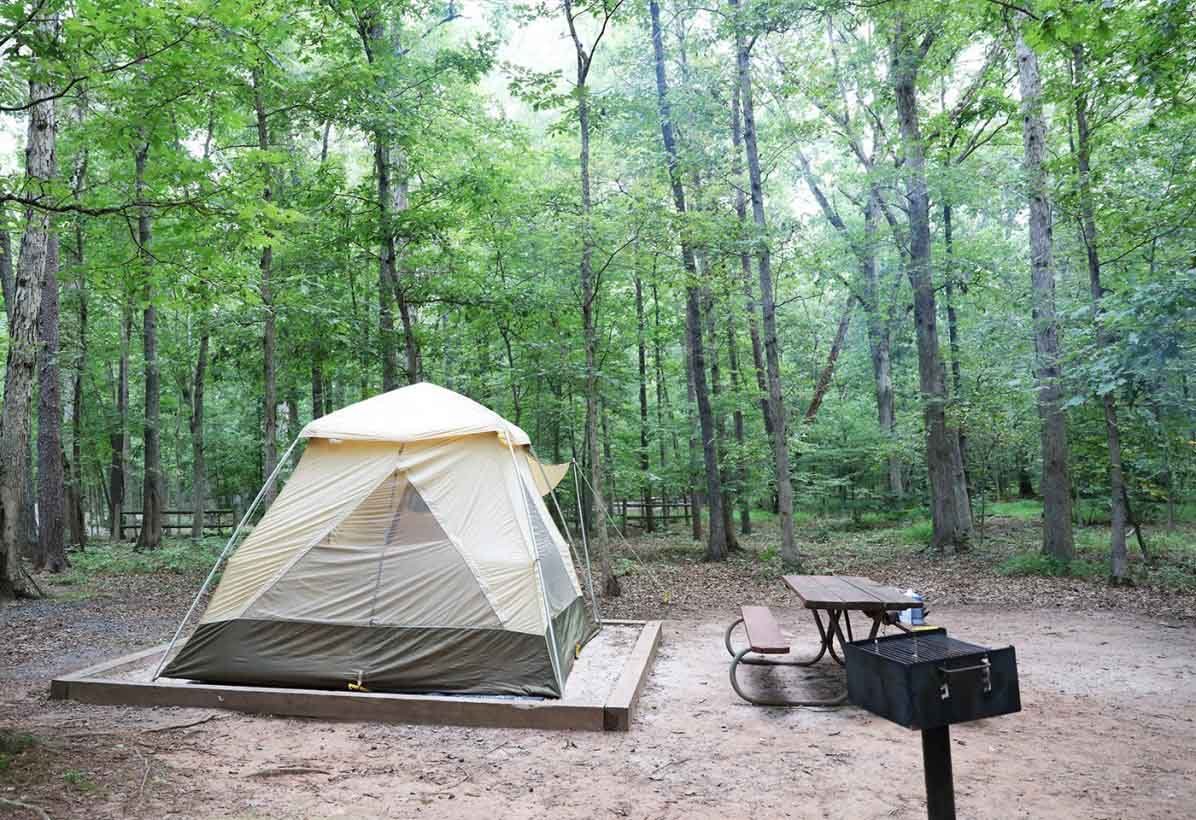Published Articles
Chamber Pots and Close Stools: A Necessary Study of Colonial Private Life - February 2001
Ivor Noel Hume writes, “Chamber pots have long been the butt of indelicate jokes. Nevertheless, it seems reasonable to assume that in the days before we had indoor plumbing these vessels were as much a part of contemporary life as mugs, bottles, or dishes.” Historians often overlook the most basic parts of life in their exploration of the past, despite the fact they are often the most revealing. My research into chamber pots began while setting up the gaming scene in the large parlor. The staff questioned whether the close stool, normally in John’s chamber, should be included in the scene. This question led to additional research on the topic and, like one of the children on my school tours, I became very interested in chamber pots!
Colonial Elections - March 2001
Controversial elections are not a modern day phenomenon. There were no butterfly ballots or electoral colleges in the eighteenth-century, but elections in colonial Virginia presented their own unique challenges to the democratic process. The House of Burgesses was the only elected body in colonial Virginia. Two burgesses were elected from each county in Virginia, and one from Jamestown, Williamsburg, Norfolk and the College of William and Mary.
Through a Pier Glass: A Look at the Carlyle Inventory - April 2001
The discovery of new acquisitions to enhance the collection is one of the most exciting aspects of the museum profession. The Carlyle House staff realized this first hand when Mary Ruth spotted two pier glasses at the Alexandria Antique Show earlier this month. After some bargaining, the dealer agreed to let us have the pier glasses on approval so our collections committee could review them. A group of experts examined them to verify their period authenticity. When the staff hung the pier glasses in the large parlor, no one could deny that they belonged in the Carlyle House collection. The long search for these important pieces of John Carlyle’s household has at last ended.
Dressing the Bed - May 2001
Any discussion about 18th-century beds would not be complete without mention of the most expensive portion of the bed: the “bed furniture.” These textile components of the bed included the bed curtains, valances and coverlets or quilts. (See glossary at end of article for period definitions.) In fact, using period inventories, low post beds can often be identified by the absence of corresponding mention of these items. Consequently, by looking at various textiles associated with each of the museum’s beds, a hierarchy is apparent.
Colonial Midwives - June 2001
For the eighteenth-century women, pregnancy and childbirth were integral parts of their lives. According to historian Daniel Smith “Men and women prided themselves upon their numerous offspring, not only because of a belief that they were obeying a scriptural command to replenish the earth and a patriotic duty to add citizens to the Empire, but also because they regarded children as a natural investment, a kind of insurance against old age and misfortune.” It was not uncommon for women in Colonial Virginia, as in the case of Sarah Carlyle, to have an average of seven to eight children. As a result of these numerous pregnancies and laying-ins, childbirth became an important part of women’s social lives. Laura Thatcher Ulrich, the author of A Midwife’s Tale, writes, “this was the era of ‘social childbirth’ when female relatives and neighbors, as well as midwives attended the births.” Pregnancies were frequently mentioned in the newspapers and during the actual birth neighboring friends and relatives would come to assist or simply to join in the social atmosphere. At the center of this social occasion was the midwife.
Growing up in the Carlyle House - July 2001
An important part of interpreting the Carlyle House for your visitors is to mentally fill the house with the people that lived there. It’s often difficult to imagine on quiet days in the museum, but at one point in the house’s long history it would have been filled with the sound of children. Using the clues found in John Carlyle’s letters and Will, we can piece together an accurate image of what it would have been like to be a child growing up at the Carlyle House.
Widowed, Again - August 2001
On March 7, 1769, John Carlyle was widowed for the second time in twenty-two years. Harry Piper, one of Carlyle’s fellow merchants in Alexandria, noted Sybil West Carlyle’s death in a letter written back to England, We have lost our good Neighbor Mrs. Carlyle, she Dyed of a Consumption. Although we often think of Sarah Fairfax as the “love of his life” because Carlyle asked to be buried beside her and their children at the Presbyterian Meeting House, it is clear from his writings that he is deeply grieved by the death of Sybil. In the Carlyle family bible John records, March 7th This day Sibyl Carlyle The Second Wife of John Carlyle departed this Life After a painfull illness of many months & Miscarred of A Daughter in Every Station of Life that She Lived in she filled them with Honour & dyed Greatly Lamented by All that know her. Four months later in his August 21, 1769 letter to George his sadness obviously persists when he states …I expect you may have Received my last in wich you woud be fully informed Of my great Loss which will not bear mentioning at presaent. Every day I am more & more Sensable of it & truly say yr Brother wants much to be near you to Assist him to bear Up under the Dispensations of Providence.
Shedding Light on Colonial Illumination - September 2001
Artificial or natural light in the eighteenth century was a valuable commodity. In fact, the amount of light available dictated the length of a workday and had a profound effect on the life of everyday Virginians. Today with the flick of a switch a room goes from dark to light. As a result, it is difficult for us to understand what life would have been like without the convenience of electricity to illuminate a room. John Harrower gives us a good idea in the story he recounted in his diary, “Last night after I had put out the candle and gone to bed I was obliged to get up again and put on my cloaths and sit up all night by reason of a snake having got under my pillow, which made me afraid I having no light to clear the bed of him.”
Blest Be The Man Who Got The Pease - October 2001
During the French and Indian War, poor food, abysmal living conditions and disease proved to be as dangerous as the enemy to the American militia. In the summer of 1758 Obadiah Harris was a militiaman with a Massachusetts regiment engaged in roadwork. A lack of supplies had brought the regiment to a stand still and the men close to desertion. When provisions arrived on the 22nd of August, Harris celebrated the event in “Fourteeners.”
Changing Seasons at the Carlyle House - November 2001
The change in the colors of the leaves and the brisk fall air are a reminder to most of us that winter is approaching. Besides pulling out warmer clothes and adding blankets to the bed, our daily lives are not impacted too much by the change in seasons. The approaching of cooler weather would have brought many visible changes to the Carlyle House in the eighteenth-century. Changes in the appearances of rooms indicated the approaching winter just as much as the falling leaves outside.
The Dessert Table is Back - December 2001
The Carlyle dessert table is out again just in time for the holiday season. The table displays all the important elements of the second course of an eighteenth-century meal. Unlike today, Christmas Day was a holy day—not a holiday. But the twelve days that followed, until the epiphany, were marked with entertaining in Virginia. The table in the museum today is representative of a table found during this time of year or any other time an elegant dessert course was required.


